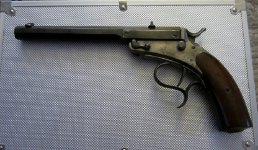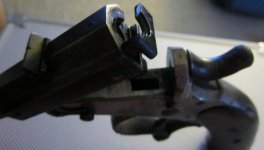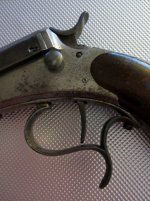Dennis6474
New member
I have what appears to be .32 target pistol. There is no manufacturer on the gun anywhere. There is a number "1" stamped on every part. The barrel, trigger guard etc. There are two stamping of what might be a shield on top of the barrel and receiver. The trigger is very light is what leads me to think it is a target gun.
I have had many guesses from gun maker's toy to prototype.
I know the pictures may not allow identification but let me know and I will try for some more or point me in a direction.
I have had many guesses from gun maker's toy to prototype.
I know the pictures may not allow identification but let me know and I will try for some more or point me in a direction.



